Happy Traum Tribute (Saturday)
2025 Lineup | 2025 Lineup List | Past Years: 2024 Lineup | 2023 Lineup
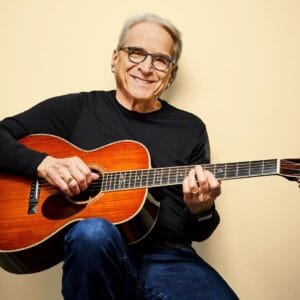
Happy Traum
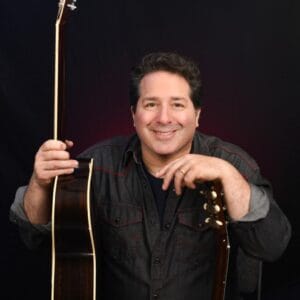
Adam Traum
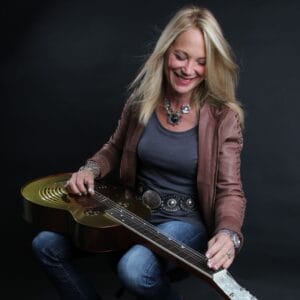
Cindy Cashdollar
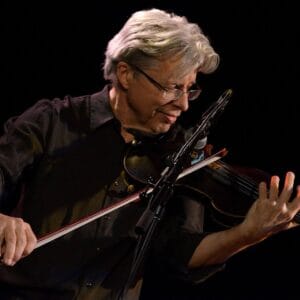
Darol Anger
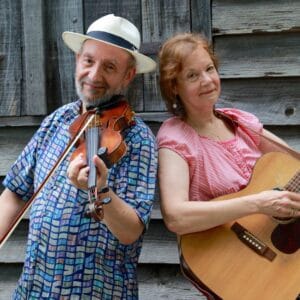
Jay Ungar & Molly Mason

Mike + Ruthy
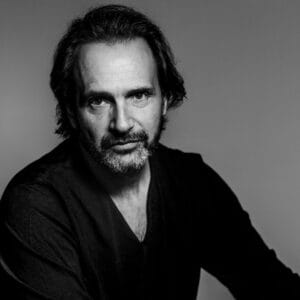
Eugene Ruffolo

John Sebastian
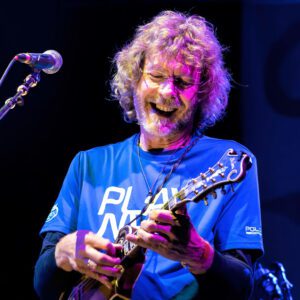
Sam Bush photo by Jake Jacobson
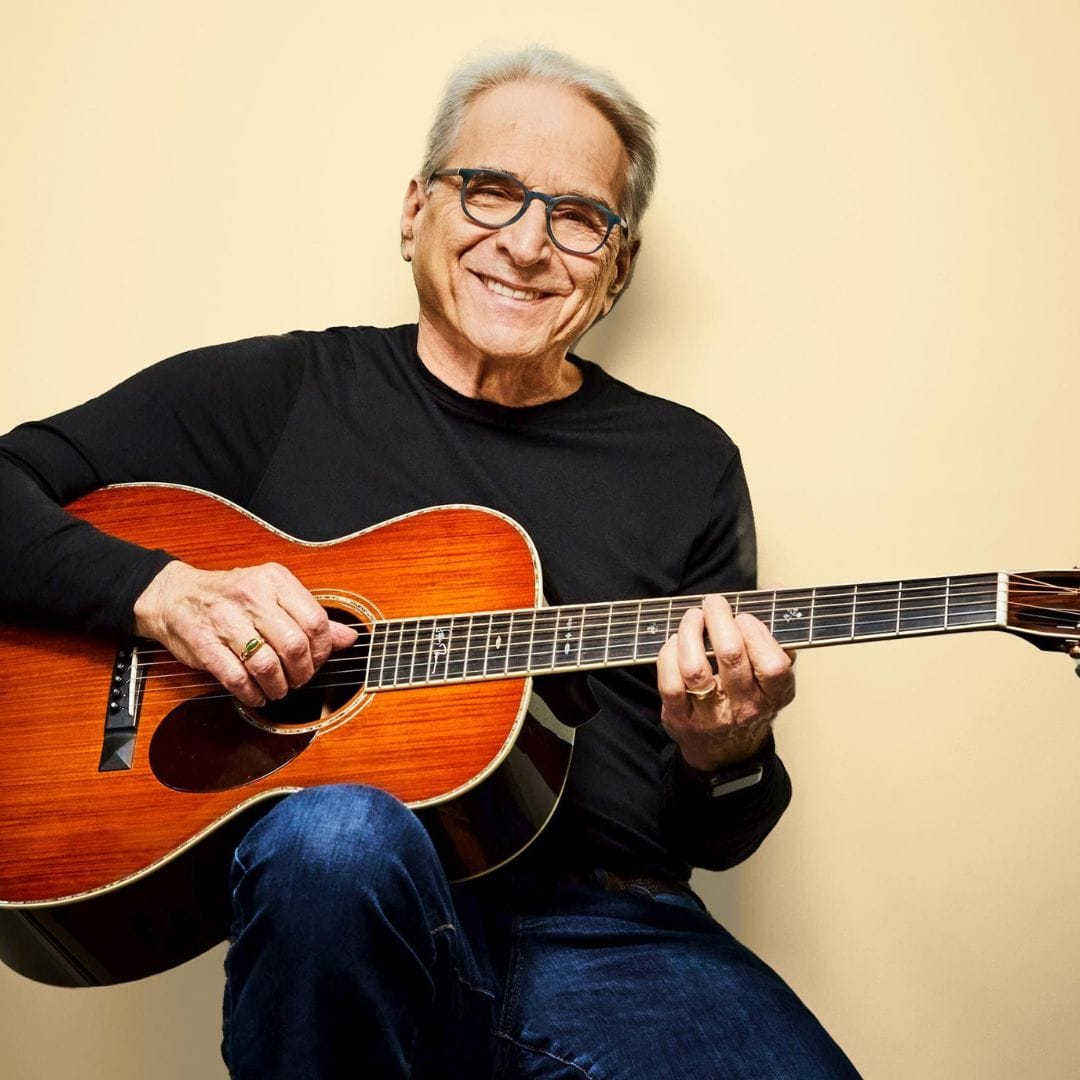
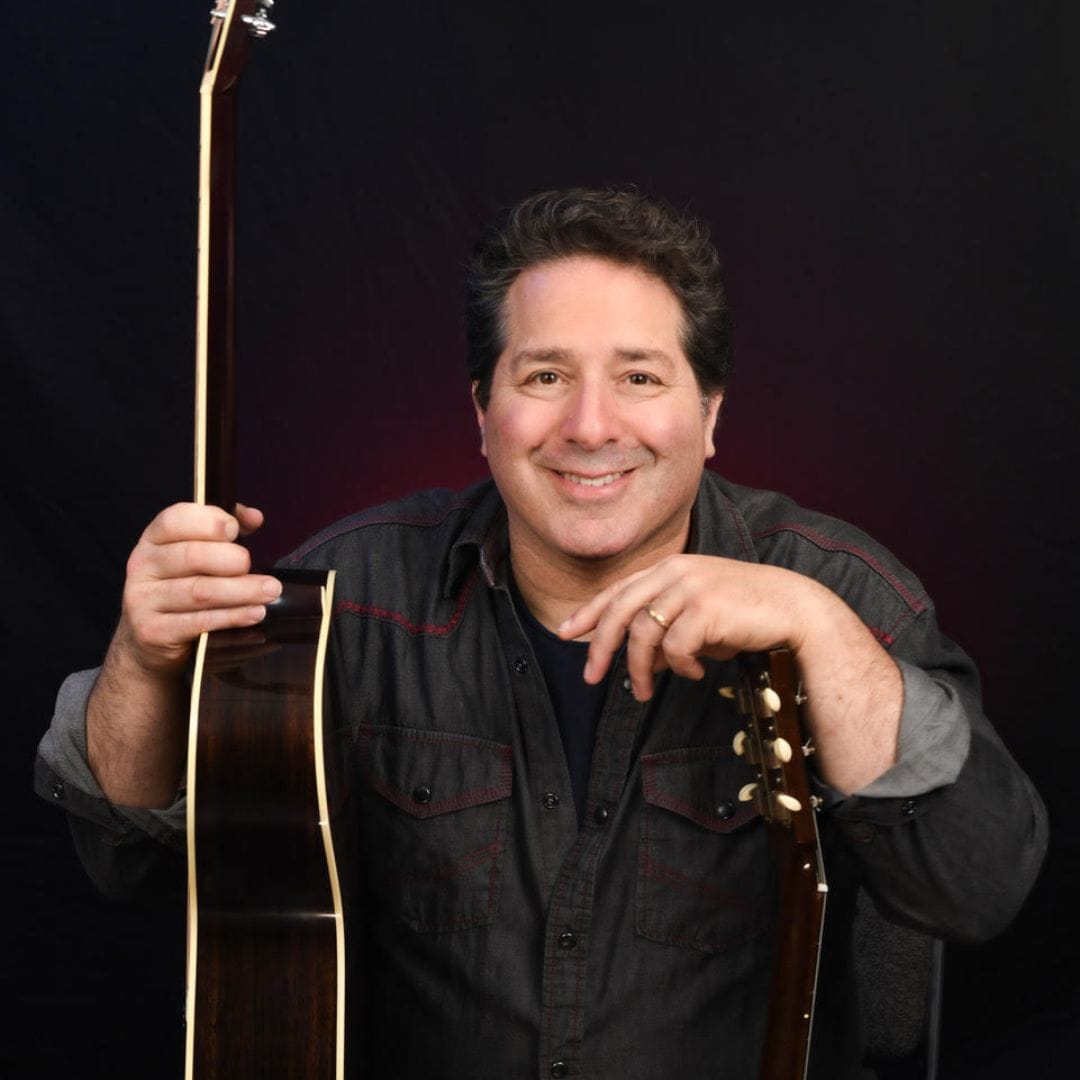
Featuring...
The Happy Traum Tribute will feature Adam Traum, Cindy Cashdollar, Jay Ungar, Molly Mason, Mike Merenda, Ruthy Ungar, Eugene Ruffolo and other special guests, including Sam Bush.
Happy Traum

Happy Traum
Happy Traum was smitten by American folk music and began playing guitar and 5-string banjo as a teenager. He was an active participant in the legendary Washington Square/Greenwich Village folk scene of the 1950’s and 60’s and studied guitar with famed blues master Brownie McGhee. A first-rate fingerstyle guitarist and singer, he performed throughout the U.S., Canada, Europe, Australia, and Japan, as a soloist and member of various groups, including The Woodstock Mountains Review. His avid interest in traditional and contemporary folk music earned him recognition as a performer, writer, editor, session musician, teacher and recording artist.
Happy’s first appearance in a recording studio was at a historic session in 1963 when a group of young folk musicians, including Bob Dylan, Phil Ochs, Pete Seeger, Peter LaFarge, and The Freedom Singers gathered in Folkways Records’ studio for an album called Broadsides. Happy with his group the New World Singers, then cut the first recorded version of “Blowin’ in the Wind,” and Happy sang a duet with Dylan on his anti-war song “Let me Die in My Footsteps.” John Sebastian, Maria Muldaur, Cindy Cashdollar, Larry Campbell, and Allen Ginsberg are just a few of his many celebrated collaborators. Over the years happy and his son, Adam Traum, played many live shows and appeared on each other’s recordings together.
A true stalwart of the Woodstock music scene, Happy is know as one-half of Happy and Artie Traum, a duo he began with his late brother. Together they put out several albums including Happy and Artie Traum (1969), Double Back I(1971), Hard Time in the Country (1975), and Test of Time (1993). Some of Happy’s solo releases include American Stranger (1975), Bright Morning Stars (2000), I walk the Road Again (2005), Just for the Love of It (2015), and his most recent critically acclaimed CD, There’s a Bright Side Somewhere (2022).
He founded Homespun Music Instruction with his wife and partner, Jane Traum, in 1967. This treasure trove of instructional lessons continues to grow and to be available at Homespun.com.
Happy’s immense musical impact will be felt for generations to come.
Adam Traum

Adam Traum
As a storyteller Adam Traum wraps his catchy hooks with infectious grooves. His songs have a consistent verve, which reflects his belief in music as an essential element of the human experience. The material Adam writes evokes images of an Americana landscape spinning tales of love, heartbreak, beauty and the occasional observational diatribe. When he performs live Adam brings his sunny disposition and genuine love of playing music to the stage. His tasteful instrumental chops and relaxed but powerful voice are a great compliment to his well-crafted songs.
The rootstock of Traum’s music germinated in the fertile ground of the Catskill Mountains. He was raised in a musical family in Woodstock, New York, with a front row seat to music history. His passion for music was enhanced by going to many festivals and shows in his formative years. As an aspiring guitarist Traum was always welcome to pick along at jam sessions with family friends, many of whom happened to be musical luminaries.
Traum regularly raided his father’s record collection listening to the masters of electric blues, country and folk in addition to regular doses of rock albums he got at the local record store. He would spend hours playing along and figuring out his favorite riffs. Thanks to the time spent exploring these musical avenues, he became a well-rounded musician able to nimbly shift between genres.
After tenures in several rock bands as a young musician, Traum found the truth, beauty and honesty in the roots music he was raised around. One year at MerleFest in North Carolina, he had a musical epiphany after seeing Tony Rice play guitar. No gimmicks, no effects: just wood and steel! It was music made by people, for people. The authenticity of that performance is the benchmark he continually strives for whether playing acoustic or electric music.
In addition to being a busy performer, Adam is a multi-instrumentalist, producer and active music educator with several popular videos on Homespun Music Instruction. his band Wolf Run is completing their debut album, and has a more electrified sound while still holding fast to his musical sensibilities. Go to wolfrun.net to hear songs from their upcoming release.
Cindy Cashdollar

Cindy Cashdollar
Cindy Cashdollar grew up in Woodstock, New York. Cashdollar is an old local family name. Her great-uncle Albert Cashdollar was the Town Supervisor and the family ran Locust Grove Dairy. The whole musical community watched as Cindy’s talent swiftly grew on the Dobro and then lap steel as she played with everyone in town during the late 1970s and ‘80s, The demand for her musical touch led her to touring and performing regionally with local Woodstock luminaries Levon Helm, Rick Danko, bluegrass singer John Herald, blues legend Paul Butterfield, and folk heroes Happy & Artie Traum. However, in 1992 her restless musical quest took her to Nashville where she met and landed a job with America’s premiere Western Swing group Asleep At The Wheel, leading her to Austin. Expanding her instrumental prowess to the steel guitar, Cindy’s taste and style added to the band’s sound as she toured and recorded with them for nine years. During her time with the band she had the chance to collaborate with legends such as Willie Nelson, Merle Haggard, Dolly Parton and Lyle Lovett, among others, and won five Grammys. Upon leaving AATW to once again engage in a wider variety of music, the names of those who sought her out and hired her to add fire and sweetness to their music are lifted out of the record books: Ryan Adams, Bob Dylan (on his Grammy winning Time Out of Mind album), Van Morrison, Dave Alvin, John Sebastian, Rod Stewart, Albert Lee, Sonny Landreth, Marcia Ball, Rory Block, Jorma Kaukonen, Leon Redbone, Peter Rowan …and on and on. She was the first woman to be inducted into the Texas Steel Guitar Hall Of Fame, also inducted into the Texas Music Hall Of Fame, and has been a nominee for Instrumentalist Of The Year by the Americana Music Association. In 2022 the revered Country Music Hall Of Fame and Museum added Cindy to their “Nashville Cats” roster, which honors side musicians for their contributions to recordings and live performances.
biography by Brian Hollander
Darol Anger

Darol Anger
Fiddler Darol Anger has helped drive the evolution of contemporary violin through pathbreaking ensembles such as his Mr Sun, Republic Of Strings, Turtle Island String Quartet, the David Grisman Quintet, Psychograss, and others. Composing and performing internationally since 1977, he has produced numerous important recordings and is considered one of the most influential fiddlers of the last fifty years. He is a Professor Emeritus at Berklee College, tours with his band Mr Sun, and operates an online Fiddle School at ArtistWorks.com.
“Happy Traum is probably more responsible than anyone for this vast nation of acoustic string musicians who are also fans, and keep us “pros” going.”
Jay Ungar & Molly Mason

Jay Ungar & Molly Mason
Jay Ungar and Molly Mason are a legendary duo in the world of American folk music, renowned for their emotive compositions, masterful musicianship, and deep connection to the traditions they bring to life. Their partnership, both musical and personal, has produced timeless works that continue to resonate with audiences worldwide.
Jay Ungar, a virtuoso fiddler and composer, is perhaps best known for his iconic piece “Ashokan Farewell,” a poignant waltz that gained international fame as the theme of Ken Burns’ PBS series The Civil War. The piece earned a Grammy nomination, an Emmy Award, and cemented Ungar’s place as one of the most evocative voices in contemporary American music. Molly Mason, an accomplished pianist, guitarist, and bassist, complements Ungar’s artistry with her rich harmonies and sophisticated arrangements, creating a perfect musical balance.
Together, the duo has produced an extensive body of work, blending traditional folk, Appalachian, swing, and original compositions into a repertoire that is as diverse as it is heartfelt. Their albums, including The Lovers’ Waltz, Harvest Home, and Pleasures of Winter, showcase their ability to breathe fresh life into age-old tunes while crafting new pieces that feel timeless.
Jay and Molly’s live performances are celebrated for their warmth, intimacy, and ability to connect deeply with their audience. Whether playing at major venues, folk festivals, or smaller community gatherings, they bring an authenticity and emotional depth to every performance.
Beyond their work as performers, Jay and Molly are passionate educators and cultural ambassadors. They founded the Ashokan Music & Dance Camps in New York’s Catskill Mountains, where they teach and inspire musicians of all levels, fostering a love for traditional music and dance. Their commitment to preserving and revitalizing folk traditions has made them pillars of the folk music community.
Over their decades-long career, Jay Ungar and Molly Mason have earned a place as two of the most respected figures in American folk music. Their artistry, rooted in tradition and brimming with heartfelt innovation, continues to inspire and move listeners, ensuring their legacy as torchbearers of a rich musical heritage.
Mike + Ruthy (of The Mammals)

Mike + Ruthy
Mike Merenda & Ruth Ungar (Mike + Ruthy) are an ethereal harmony duo and the heart of beloved Americana quintet, The Mammals. A cornerstone of the Northeast folk music community for the past 25 years, these exceptional songwriters host their own festival, The Hoot, and in 2025 will issue their 18th self-released record on their own independent record label, Humble Abode Music. While The Mammals quintet is lauded for high energy, deep roots and dynamic performances, a Mike + Ruthy concert captivates with minimalist acoustic intimacy and moving storytelling that harkens back to the great folk acts of past. Ruthy is the daughter of acclaimed fiddler, Jay Ungar, whose composition “Ashokan Farewell” served as the main theme for the Ken Burns documentary, “The Civil War.” Mike + Ruthy are also regular instructors at the Milk Carton Kids’ Sad Songs Summer Camp in the Catskill Mountains.
Eugene Ruffolo

Eugene Ruffolo
Acclaimed New York City based singer/songwriter Eugene Ruffolo has just released his ninth recording Ten Good Sermons. In addition to his original music, Ruffolo’s unique vocal talents have made him a favorite of many prominent artists. Both in the studio and in live performance, he has worked with artists as diverse as David Byrne, Garth Brooks, Tony Bennett, Kenny Loggins, David Wilcox, Run DMC, Mary Chapin Carpenter, Spyro Gyra, Cheryl Wheeler, and Livingston Taylor to name a few. Rolling Stone Magazine hailed him as an “artist to watch-masculine and sensitive at the same time- with an utterly intriguing voice.”
John Sebastian

John Sebastian
Greenwich Village native John Sebastian’s contribution to modern music is unparalleled. The multi-instrumentalist singer/songwriter graced a wide spectrum of styles throughout his 60 years in music: contemporary folk, jug band, AM pop, contemporary pop/rock, folk-rock, country and psychedelic/garage rock.
Sebastian’s performances on records for Bob Dylan (Bringing It All Back Home) and The Doors (harmonica on “Roadhouse Blues”) are the stuff of legend.
John Sebastian was the co-founder of the Lovin’ Spoonful, often referred to as the American Beatles, who scored an incredible seven huge hits from 1965 to 1969, including: “Summer in the City,” “Daydream,” “Did You Ever Have to Make Up Your Mind,” “Nashville Cats,” “Do You Believe in Magic,” “You Didn’t Have to Be So Nice” and “Rain on the Roof.”
After the Lovin’ Spoonful disbanded in early 1969, Sebastian went solo and, by August of that year, was immortalized for his performance at the Woodstock Music and Art Fair in the Warner Bros. movie Woodstock. The film chronicled his impromptu performance before 400,000 fans on Saturday August 16, 1969 at 3:30 pm EST in Bethel, NY, elevating the soft-spoken artist to rock icon status. In 1975 Sebastian’s self-penned solo hit, “Welcome Back,” became the theme for the perennial sitcom Welcome Back Kotter. The song soared to the top of the charts to again weave his music into the fabric of our popular culture. His songs have been covered by hundreds of artists and he continues to write, tour, record and make significant contributions to modern culture and is long considered the spokesperson for his generation.
John Sebastian was inducted into the Rock and Roll Hall of Fame in 2000 and his signature autoharp is currently on display at the Metropolitan Museum of Art in New York City. He continues to write and record and occasionally makes special appearances.
Sam Bush

Sam Bush photo by Jake Jacobson
There was only one prize-winning teenager carrying stones big enough to say thanks, but no thanks to Roy Acuff. Only one son of Kentucky finding a light of inspiration from Bill Monroe and his Blue Grass Boys and catching a fire from Bob Marley and The Wailers. Only one progressive hippie allying with like-minded conspirators, rolling out the New Grass revolution, and then leaving the genre’s torch-bearing band behind as it reached its commercial peak.
There is only one consensus pick of peers and predecessors, of the traditionalists, the rebels, and the next gen devotees. Music’s ultimate inside outsider. Or is it outside insider? There is only one Sam Bush.
On a Bowling Green, Kentucky cattle farm in the post-war 1950s, Bush grew up an only son, and with four sisters. His love of music came immediately, encouraged by his parents’ record collection and, particularly, by his father Charlie, a fiddler, who organized local jams. Charlie envisioned his son someday a staff fiddler at the Grand Ole Opry, but a clear day’s signal from Nashville brought to Bush’s television screen a tow-headed boy named Ricky Skaggs playing mandolin with Flatt and Scruggs, and an epiphany for Bush. At 11, he purchased his first mandolin.
As a teen fiddler Bush was a three-time national champion in the junior division of the National Oldtime Fiddler’s Contest. He recorded an instrumental album, Poor Richard’s Almanac as a high school senior and in the spring of 1970 attended the Fiddlers Convention in Union Grove, NC. There he heard the New Deal String Band, taking notice of their rock-inspired brand of progressive bluegrass.
Acuff offered him a spot in his band. Bush politely turned down the country titan. It was not the music he wanted to play. He admired the grace of Flatt & Scruggs, loved Bill Monroe- even saw him perform at the Ryman- but he’d discovered electrified alternatives to tradition in the Osborne Brothers and manifest destiny in The Dillards.
See the photo of a fresh-faced Sam Bush in his shiny blue high school graduation gown, circa 1970. Tufts of blonde hair breaking free of the borders of his squared cap, Bush is smiling, flanked by his proud parents. The next day he was gone, bound for Los Angeles. He got as far as his nerve would take him- Las Vegas- then doubled back to Bowling Green.
“I started working at the Holiday Inn as a busboy,” Bush recalls. “Ebo Walker and Lonnie Peerce came in one night asking if I wanted to come to Louisville and play five nights a week with the Bluegrass Alliance. That was a big, ol’ ‘Hell yes, let’s go.’”
Bush played guitar in the group, then began playing mandolin after recruiting guitarist Tony Rice to the fold. Following a fallout with Peerce in 1971, Bush and his Alliance mates- Walker, Courtney Johnson, and Curtis Burch- formed the New Grass Revival, issuing the band’s debut, New Grass Revival. Walker left soon after, replaced temporarily by Butch Robins, with the quartet solidifying around the arrival of bassist John Cowan.
“There were already people that had deviated from Bill Monroe’s style of bluegrass,” Bush explains. “If anything, we were reviving a newgrass style that had already been started. Our kind of music tended to come from the idea of long jams and rock-&-roll songs.”
Shunned by some traditionalists, New Grass Revival played bluegrass fests slotted in late-night sets for the “long-hairs and hippies.” Quickly becoming a favorite of rock audiences, they garnered the attention of Leon Russell, one of the era’s most popular artists. Russell hired New Grass as his supporting act on a massive tour in 1973 that put the band nightly in front of tens of thousands.
At tour’s end, it was back to headlining six nights a week at an Indiana pizza joint. But, they were resilient, grinding it out on the road. And in 1975 the Revival first played Telluride, Colorado, forming a connection with the region and its fans that has prospered for 45 years.
Bush was the newgrass commando, incorporating a variety of genres into the repertoire. He discovered a sibling similarity with the reggae rhythms of Marley and The Wailers, and, accordingly, developed an ear-turning original style of mandolin playing. The group issued five albums in their first seven years, and in 1979 became Russell’s backing band. By 1981, Johnson and Burch left the group, replaced by banjoist Bela Fleck and guitarist Pat Flynn.
A three-record contract with Capitol Records and a conscious turn to the country market took the Revival to new commercial heights. Bush survived a life-threatening bout with cancer, and returned to the group that’d become more popular than ever. They released chart-climbing singles, made videos, earned Grammy nominations, and, at their zenith, called it quits.
“We were on the verge of getting bigger,” recalls Bush. “Or maybe we’d gone as far as we could. I’d spent 18 years in a four-piece partnership. I needed a break. But, I appreciated the 18 years we had.”
Bush worked the next five years with Emmylou Harris’ Nash Ramblers, then a stint with Lyle Lovett. He took home three-straight IBMA Mandolin Player of the Year awards, 1990-92, (and a fourth in 2007). In 1995 he reunited with Fleck, now a burgeoning superstar, and toured with the Flecktones, reigniting his penchant for improvisation. Then, finally, after a quarter-century of making music with New Grass Revival and collaborating with other bands, Sam Bush went solo.
He’s released seven albums and a live DVD over the past two decades. In 2009, the
Americana Music Association awarded Bush the Lifetime Achievement Award for Instrumentalist. Punch Brothers, Steep Canyon Rangers, and Greensky Bluegrass are just a few present-day bluegrass vanguards among so many musicians he’s influenced. His performances are annual highlights of the festival circuit, with Bush’s joyous perennial appearances at the town’s famed bluegrass fest earning him the title, “King of Telluride.”
“With this band I have now I am free to try anything. Looking back at the last 50 years of playing newgrass, with the elements of jazz improvisation and rock-&-roll, jamming, playing with New Grass Revival, Leon, and Emmylou; it’s a culmination of all of that,” says Bush. “I can unapologetically stand onstage and feel I’m representing those songs well.”
